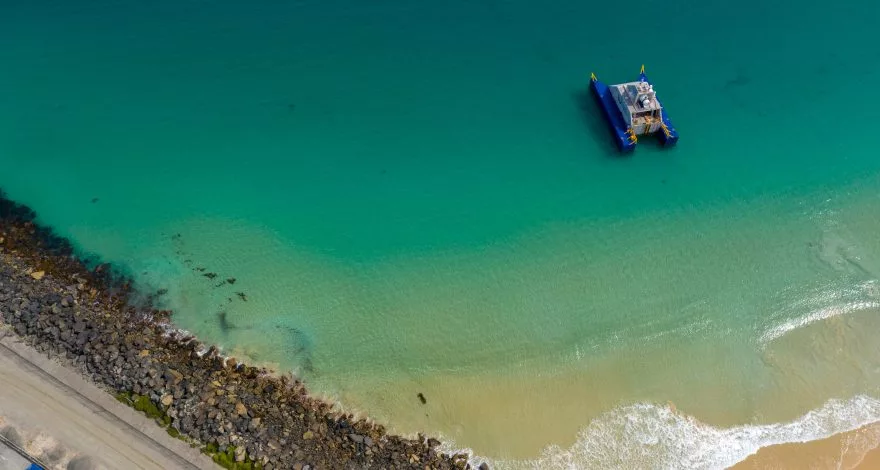A 200-kilowatt demonstration version of Wave Swell Energy's fascinating "blowhole" power generator has been deployed at Grassy Harbour on King Island, off the Australian island state of Tasmania and will be connected to the grid in the coming months.
The UniWave200 device harnesses wave energy by channeling water in and out of a concrete chamber as the waves ebb and flow. The water pushes air in and out of the top of the chamber, forming an artificial blowhole from which energy can be harvested using a wind turbine. Controversially, it only harvests energy on the in-stroke. Wave Swell Energy CEO Tom Denniss told us in 2017 that the complexity of bidirectional turbines makes them less efficient than a simple, single-direction turbine like this one.

This project will contribute to King Island's renewable energy mix, which also includes wind and solar generation. But its key job is to prove the efficiency, reliability, durability and accessibility of the technology itself, which Wave Swell Energy claims could bring renewable energy generation costs on par with coal-fired generation costs in larger megawatt-scale installations.
Many renewable sources are starting to beat coal on price, but wave energy offers a different generation cycle to add to the renewable mix. It's certainly not the prettiest structure to plonk in the middle of a gorgeous Tasmanian bay, but it'll be interesting to see how it stacks up.
Source: Wave Swell Energy via The Guardian







